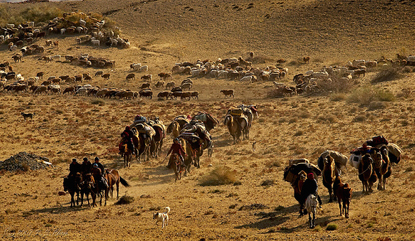Notably, Afghanistan, which never came under Soviet control, and is now viewed as part of South Asia after its 2007 accession to the South Asian Association for Regional Cooperation (SAARC), is not included. Increasingly, Afghanistan is being paired with South Asia’s other major trouble-spot, Pakistan, in what analysts term the ‘Af-Pak’ problem.
The region has been the focus of outside powers for centuries and was the site of the 19th century Anglo-Russian territory grab famously christened the ‘Great Game’ by Rudyard Kipling.
There are two factors that drive China’s involvement in Central Asia.
First, the so-called ‘New Great Game’ is a struggle for oil and gas, and is playing out between the US, Russia, Iran, India, and China.
China is aggressively pursuing Central Asian natural gas, in part due to demand pressures, but also to diversify its energy sources away from the burning of coal.
In order to tap the gas deposits of Central Asia, China is building pipelines in Kazakhstan and Turkmenistan. Recently, a pipeline was completed linking the Kazakh shore of the Caspian Sea, an area rich in natural gas, to Xinjiang province, and onto Shanghai.
Second, Uyghur separatism means that China is interested in consolidating its regional political power, particularly as many Uyghur separatists have fled China to the Central Asian republics, mostly Kazakhstan and Kyrgyzstan.
According to Indian academic Srikanth Kondapalli, Chinese involvement in Central Asia over Xinjiang has a long history. The region was destabilised after the Soviet invasion of Afghanistan in 1979, and, because of broader geopolitical considerations, China countered the USSR by supporting the mujahedin in Afghanistan. Incidentally, these mujahidin are now part of the ‘blowback’ characteristic of Central Asian politics – they support the Uyghurs in their fight for secession.
In an interview that I conducted, Kondapalli claimed that Chinese General Xiong Guangkai trained five thousand mujahedin between 1979-89; and supplied Red Arrow missiles, which are now being used against the Chinese.
The US also had operations with China during the latter part of the Cold War, including two USSR-facing signals intelligence (SIGINT) facilities at Qitai and Korla in Xinjiang. Further, Mujahedin training programs in Pakistan were conducted jointly by the CIA and the People’s Liberation Army’s International Liaison Department (a counter-espionage unit publicly known as the ‘China Association for International Friendly Contacts’).
Since the fall of the USSR, Sino-Russian cooperation has been reinstated, particularly through the Shanghai Cooperation Organisation (SCO).
Thus, in this context, China’s aggressive leadership of the SCO can be seen as a means of achieving its goal of controlling Uyghur ‘splittists’. The original Shanghai Five organisation (the predecessor of the SCO) was developed from security treaties signed between China and the Central Asian states with the aim of clearly demarcating borders and curbing separatism. The SCO is still more of an economic than military organisation, but as the only multilateral institution in the region it is becoming increasingly influential.
China’s main focus is still on East Asia, and Taiwan in particular. Nonetheless, its relationships with the countries on its western borders are becoming increasingly important, and its influence in this volatile region will only continue to grow.
Louise Merrington is a PhD candidate in the Department of Political and Social Change, ANU.

